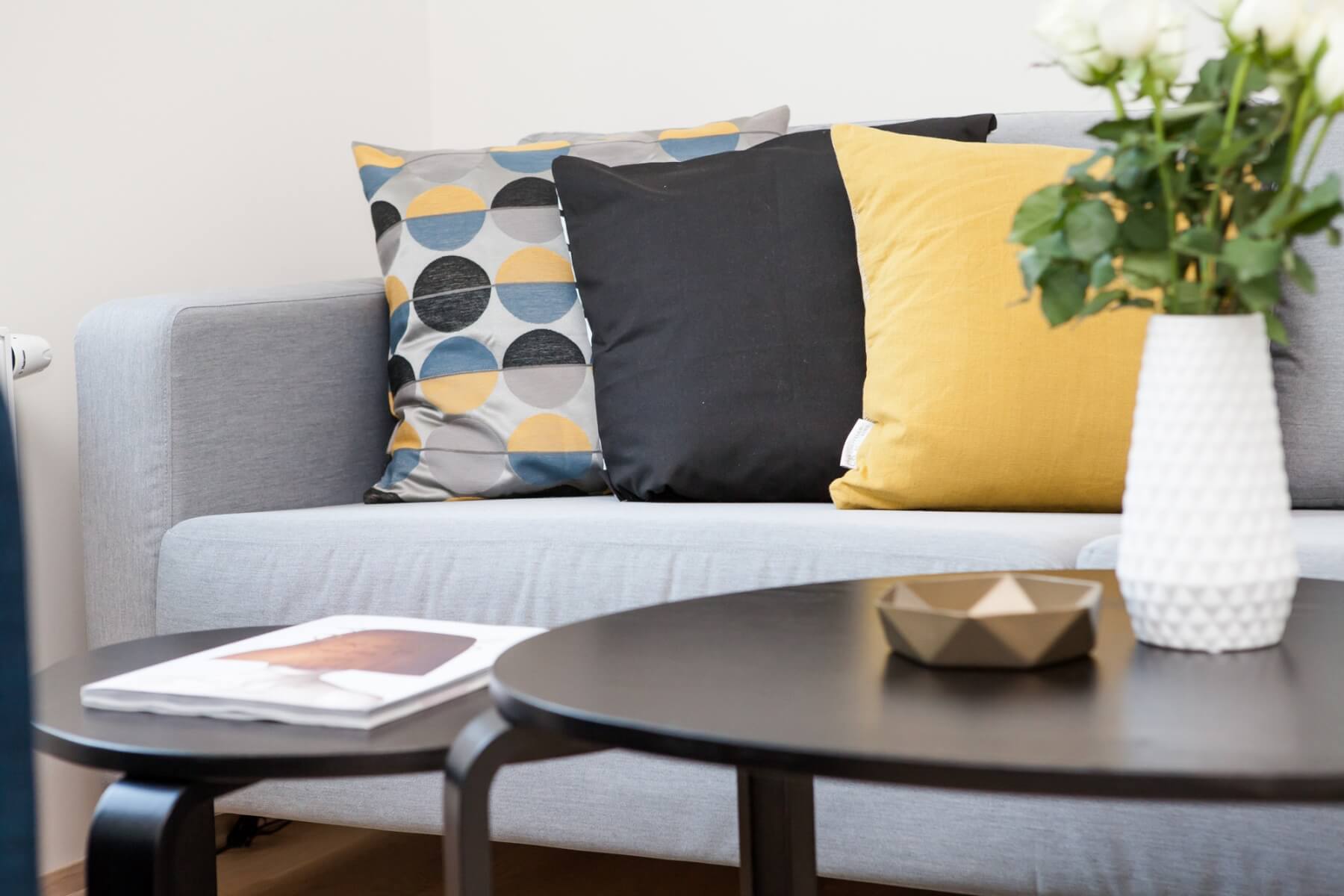Creating a Color Palette

March 2021
When decorating an apartment, some people opt for whatever the trendiest colors of the moment are. While that works, living with a trend can also mean needing to redecorate when the trend fades. Or, putting something out there that doesn’t fit who you really are. Why not instead build from a color you love? If you follow three simple steps, creating your own color palette is foolproof. And if you’re not feeling that confident, a little technology can help, too.
What color do you love?
What are your favorite colors? What color do you wear most often? Just make sure it’s a color for which you have an enduring love. If you like neon green but didn’t like it a month ago, that’s one to avoid. Have the courage to ignore the trends and go with what makes your heart happy. That is your foundational color.
Explore highlights and low-lights
Look for lighter or darker versions of your foundational color. You can use these for significant pieces like furniture or rugs. A helpful analogy is to think about adding highlights or low-lights to your hair. There’s variation, but it all ties to a single base color.
Add cool and warm tones
Now it’s time to depart from that foundational color. If you don’t, your room will look dull and monochromatic. Some people refer to this as adding a “pop” of color. If you’ve ever seen a color wheel (if not, Google it), one half is warm colors like red, orange, yellow, and light green. The other half is cool colors like purple, blue, aqua, and dark green. Choose one warm color and one cool color that goes well with your foundational color. Use these for art and accessories. It’s important to have one of each. Only adding a cool color can make a room feel less inviting. Adding only a warm color can make it feel overwhelming.
If you love the idea of decorating with your own color palette but aren’t feeling confident, try one of the many free online tools for color selection. ColorSnap, Visualize Color, and Color Calculator are all good options.
